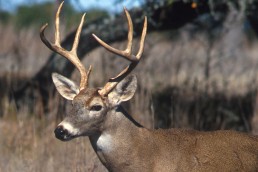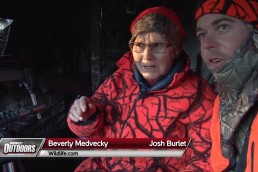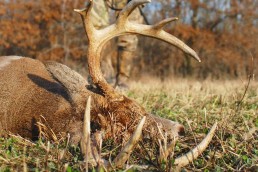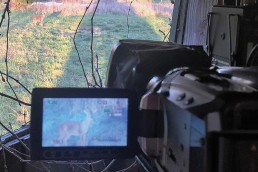Kentucky’s Deer Hunters Continue Setting Records
SHARE THIS POST
Kentucky often comes up in discussions about the best places in the country to hunt white-tailed deer.
It’s no wonder. The deer are plentiful, permits can be easily obtained and the state produces several trophy-class bucks each year.
The 2015-16 deer season is reinforcing Kentucky’s reputation by breaking records. Two more fell recently when black powder hunters finished a record-late muzzleloader season and sent the state’s overall harvest total soaring to unprecedented heights.
Kentucky’s deer season harvest now exceeds 150,000 for the first time.
“It’s our highest harvest on record which is great,” said Gabe Jenkins, deer program coordinator for the Kentucky Department of Fish and Wildlife Resources. “The herd is healthy and deer are reproducing. We had a couple of bad winters, but we had good mast that got us through. It’s all come together.”
The previous record harvest of 144,409 deer occurred during the 2013-14 season. After a slight dip last season to 138,898 whitetails, the second highest harvest total on record, hunters have taken advantage of their opportunities.
Hunters set monthly harvest records in September, October and November. At one point, the December harvest total stood less than 400 deer shy of a new record for that month.
The modern gun season in November drives the annual harvest total. Hunters telechecked a record 44,314 deer on opening weekend and 105,440 overall during the firearm season.
Are you enjoying this post?
You can be among the first to get the latest info on where to go, what to use and how to use it!
Other highlights: A record 5,558 deer were telechecked during the statewide youth firearms weekend in October. And, the harvest of 8,262 deer during the October muzzleloader weekend was the second highest on record.
Roughly 300,000 people hunt deer each year in Kentucky and biologists estimated the state’s deer herd at 1 million before archery season opened in early September.
A variety of factors have been in the hunters’ favor since then: Good weather during key hunting timeframes and a spotty mast crop that put deer on the move, and made them more vulnerable to hunters, were important.
“A big harvest leaves hunters happy and is good for the economy,” Jenkins said. “We also have to realize there are a lot of deer on the landscape and we need to continue to manage the resource properly.
“We’re reaping a lot of rewards, as far as the quality of the deer herd, but the quantity can get out of hand pretty quickly, which can decrease the quality of your herd. We want to make sure we’re good stewards of the resource by managing our numbers.”
Jenkins encourages hunters to continue to take advantage of the continued warmer-than-normal temperatures and also consider donating a deer to Kentucky Hunters for the Hungry.
Deer donated to the program are processed and the meat gets distributed to homeless shelters and food banks throughout the state. Information about how to donate your deer, as well as a list of participating processors, is available online at kyhuntersforthehungry.info.
Kevin Kelly is a staff writer for “Kentucky Afield” magazine and covers the state for MidWest Outdoors as well. Follow him on Twitter: @kyafield.
MWO
SHARE THIS POST
Did you enjoy this post?
You can be among the first to get the latest info on where to go, what to use and how to use it!
Kevin Kelly
Author Kevin Kelly is a staff writer for “Kentucky Afield” magazine, the official publication of the Kentucky Department of Fish and Wildlife Resources. Get the latest from Kelly and the entire “Kentucky Afield” staff by following them on Twitter @kyafield.



